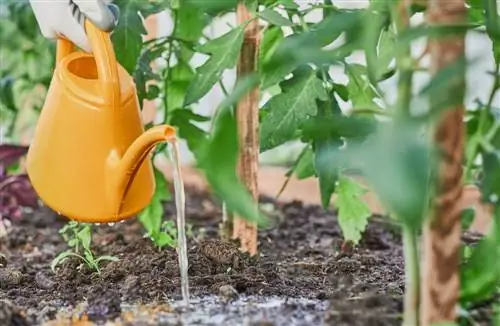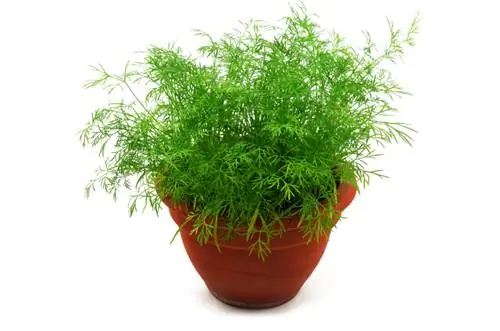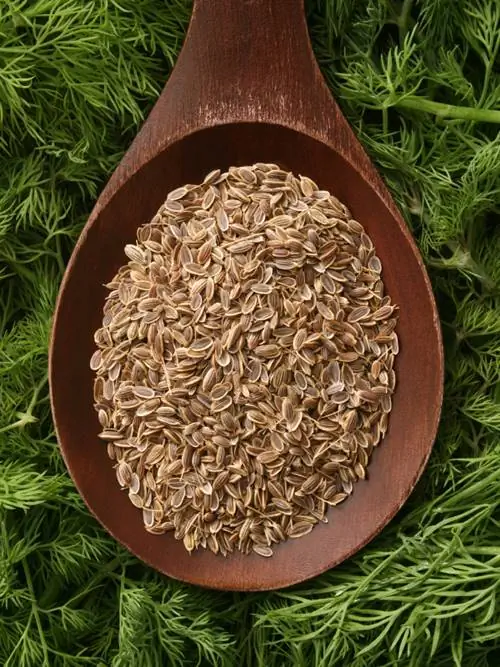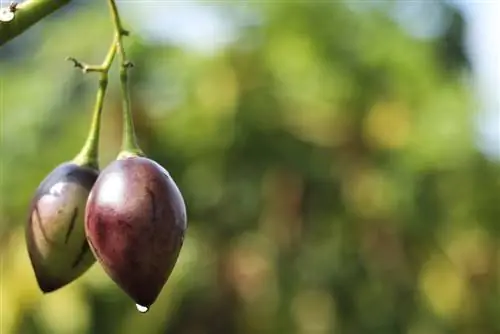- Author admin [email protected].
- Public 2023-12-16 16:46.
- Last modified 2025-01-23 11:20.
Under suitable site conditions, dill (Anethum graveolens) grows almost by itself. However, for a good harvest of the popular spice plant, the right conditions must first be created.

How should you treat dill for optimal care?
Dill needs a sunny to partially shaded location, plenty of water without waterlogging, moderate fertilization and protection from diseases such as cone blight. Harvesting takes place at the earliest six weeks after sowing and infected areas should be removed.
How often should dill be watered?
In general, dill needs a relatively large amount of water, so care should be taken to water it regularly, especially during dry summer periods. However, dill does not tolerate waterlogging, which is why when growing dill in a pot, care should be taken to ensure appropriate drainage or downward drainage options. If possible, do not spray the umbels of the dill flowers with water, but rather water very close to the ground. Wetness on the flower umbels could otherwise promote diseases such as umbel blight.
Can you also repot the dill?
Dill is usually very sensitive to any transplanting. Therefore, preferring dill is not recommended. It is better to sow the dill seeds right away as soon as night frosts are no longer expected in spring.
When is dill cut?
As an annual herb, dill is only cut for harvest purposes or when certain parts of the plant turn brown due to disease. At the earliest, about six weeks after sowing, the first parts of the dill herb or dill tips can be cut for use in the kitchen without affecting the further growth of the dill. However, if you want to dry the dill seeds, you must leave enough leaf material on the plants for the dill flowers to form.
Is dill attacked by pests?
In principle, dill is hardly attacked by pests other than aphids and certain types of bugs; rather, in the vegetable patch it provides natural protection for the following plant species from pests:
- repels cabbage white butterflies from cabbage
- protects carrots from the carrot fly
- repels root pests of caraway, celery and basil
What to do if the dill turns brown?
Dill turning brown can have various causes. If the infestation spreads like a nest on the umbels, it may be umbel blight. In this case, affected areas must be cut out and overhead watering avoided.
Should the dill also be fertilized?
As a very undemanding plant, dill does not require any special fertilization in the garden. However, it doesn't hurt to enrich the soil with nutrients before sowing by incorporating seasoned compost.
Tips & Tricks
The ideal location for dill should provide some shade for the root area and enough sun for the upper parts of the plant. In addition, a protected location protects the delicate dill plants from storm and rain damage.






